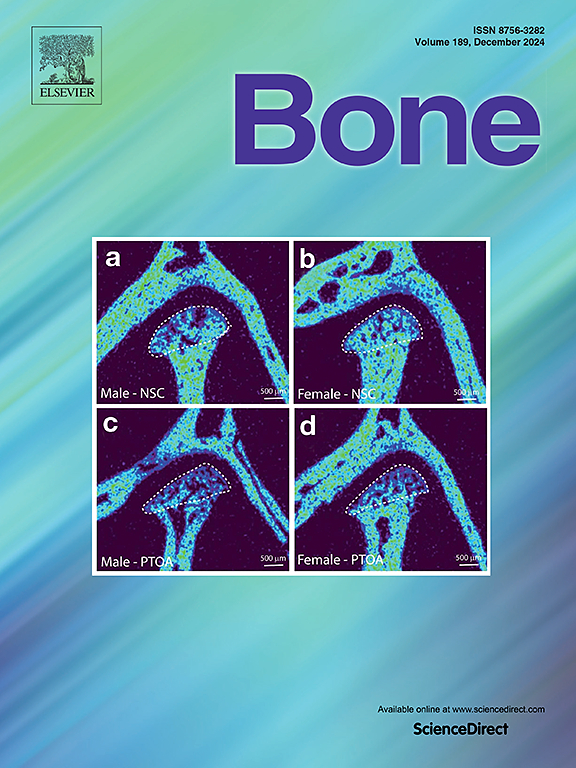基于BPX图像的放射组学检测异常骨密度
IF 3.6
2区 医学
Q2 ENDOCRINOLOGY & METABOLISM
引用次数: 0
摘要
背景:骨密度异常是导致骨脆性和骨折的主要因素。虽然双能x射线吸收仪(DXA)和定量计算机断层扫描(QCT)是主要的诊断方式,但这两种方法都与额外的辐射暴露和成本有关。本研究探讨了利用放射组学建立一种基于双平面x线摄影(BPX)图像识别BMD异常高危患者的自动化工具的可行性。方法本前瞻性研究共纳入453例受试者(女性275例)906次BPX扫描,以QCT结果为基础真值(GT)。利用放射组学技术提取L1-L5椎体的正位和侧位放射特征。使用最小绝对收缩和选择算子(LASSO)筛选最相关的特征。然后建立单纯放射组学模型和临床放射组学模型诊断BMD异常。对模型的性能进行了计算和评价。结果仅放射组学模型的准确率(ACC)男女均为0.88,女性为0.91。临床放射组学模型实现了男女的ACC为0.87,女性为0.89。结论基于BPX图像的放射组学模型能有效区分骨密度异常,在现实体检人群中具有决策支持工具的潜力。本文章由计算机程序翻译,如有差异,请以英文原文为准。
Radiomics based on BPX images to detect abnormal bone mineral density
Background
Abnormal bone mineral density (BMD) is a major contributor to bone fragility and fractures. While dual-energy X-ray absorptiometry (DXA) and quantitative computed tomography (QCT) are the primary diagnostic modalities, both methods are associated with additional radiation exposure and costs. This study investigates the feasibility of using radiomics to establish an automated tool for identifying patients at high risk for BMD abnormality based on biplanar X-ray radiography (BPX) images.
Methods
A total of 906 BPX scans from 453 subjects, including 275 females, were included in this prospective study, with QCT results as the ground truth (GT). Radiomic features were extracted from the anteroposterior and lateral views of the L1-L5 vertebrae using Pyradiomics. The most relevant features were selected using the least absolute shrinkage and selection operator (LASSO) filter. Then, radiomics-only and clinical-radiomics models were established to diagnose BMD abnormality. The performances of the models were calculated and evaluated.
Results
The radiomics-only model achieved an accuracy (ACC) of 0.88 for both sexes and 0.91 for women. The clinical-radiomics models achieved an ACC of 0.87 for both sexes and 0.89 for women.
Conclusion
The radiomics-only model based on BPX images effectively distinguishes BMD abnormality and demonstrates potential as a decision-support tool in real-world physical examination populations.
求助全文
通过发布文献求助,成功后即可免费获取论文全文。
去求助
来源期刊

Bone
医学-内分泌学与代谢
CiteScore
8.90
自引率
4.90%
发文量
264
审稿时长
30 days
期刊介绍:
BONE is an interdisciplinary forum for the rapid publication of original articles and reviews on basic, translational, and clinical aspects of bone and mineral metabolism. The Journal also encourages submissions related to interactions of bone with other organ systems, including cartilage, endocrine, muscle, fat, neural, vascular, gastrointestinal, hematopoietic, and immune systems. Particular attention is placed on the application of experimental studies to clinical practice.
 求助内容:
求助内容: 应助结果提醒方式:
应助结果提醒方式:


